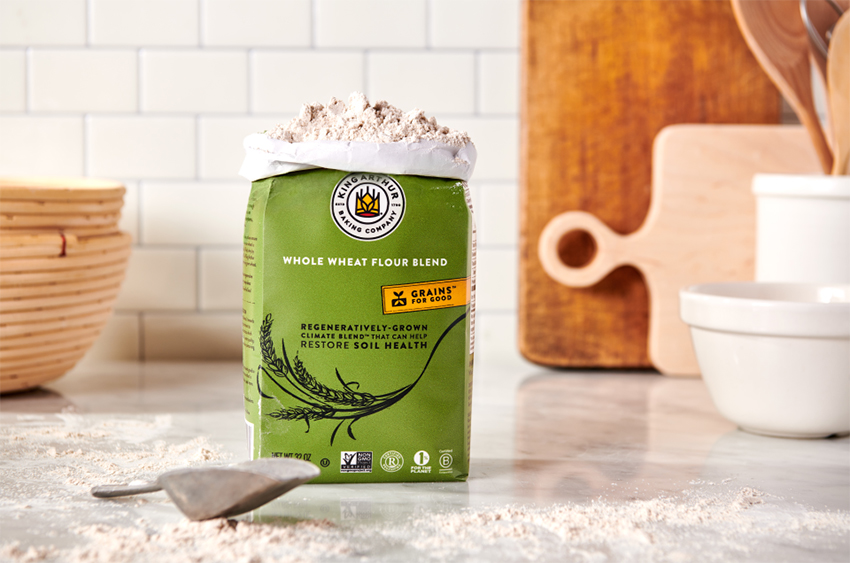Regenerative ag certifications gaining traction in U.S. market

Published: June 19, 2024
Category: Regenerative Agriculture
Regenerative certifications are starting to appear on food products in the U.S. These certifications include Regenerative Organic Certified, Land to Market, Certified Regenerative by A Greener World, Soil & Climate Health Initiative Verified, and Regenefied. These certifications are not nearly as prominent as the U.S. Department of Agriculture’s organic seal or the Non-GMO Project butterfly logo but they are gaining traction in the marketplace.
For example, Regenefied, which focuses on restoring ecosystems and regenerating soil, is now certifying farms, ranches, and food products. The certification encompasses six countries, 20 food brands, and one million acres of farmland.
A prominent food brand that received Regenefied certification is King Arthur Baking Company, which introduced Climate Blend flour that contains wheat varieties grown using regenerative agriculture practices.
King Arthur worked with Washington State University’s BreadLab to develop Climate Blend flour. The flour is made using perennial wheat grown in North Dakota and Montana, which grows back naturally and does not need to be planted again for two to three years.
“It’s probably the most visible brand in the (baked food product) space that we’re working with right now,” Kristine Root, chief marketing officer at Regenified, said of Climate Blend flour in an interview with World Grain. “We’re actually in conversation with a lot of food companies.”
Regenified champions regenerative agriculture by focusing on enhancing biodiversity, soil health, water quality, and nutrient density while supporting farm profitability, according to Regenified.
But consumer surveys show low consumer awareness of regenerative label claims. A recent Organic Trade Association survey found that 59% of consumers reported USDA Organic as the most prevalent certification in the U.S. followed by Non-GMO Project Verified, which was identified by 56% of consumers. Meanwhile, two regenerative certifications, Regenerative Organic Certified and Regenefied, were reported seen by just 7% and 5% of consumers, respectively. However, the regenerative certifications have only been seen in the marketplace for far fewer years than the organic and non-GMO labels.
Root expects consumers to respond positively to the Regenefied seal once they understand it. She points to data released in 2023 from NIQ, which showed that 54% of consumers said they were curious about trying regeneratively grown products.
Source: World Grain
To view source article, visit:
https://www.world-grain.com/articles/20040-regenerative-ag-certification-making-inroads-in-us
Organic & Non-GMO Insights June 2024




